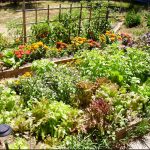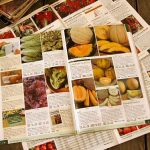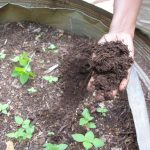Guide to Saving Tomato Seeds
Table of Contents
Most gardeners are contented with buying seeds or plants, grow them, and then harvest the yield. The bold ones among them rather choose to keep the full cycle of nature going uninterruptedly and will also keep seeds away from their plants in order to continue with the process the following year. Tomato gardeners are the most common seed savers of this group.
The reason is this; once you’ve gotten the right selection or have even formed your own that is particularly adaptable to your area and methods, you would not want to lose it. So you keep developing the seeds year after year.
Which Tomato Seeds are you to Save?
Most large scale and other non-commercial hybrid species are not likely to continue growing from generation to generation. Most hybrid manufacturers combine two similar base stocks yearly to form seeds or to reproduce definite seed plants that are not meant for commercial purpose. Likewise, most hybrid types are reproduced to have smaller amount of seeds per tomato, which makes it expensive for them save the seeds from the plants.
Almost all heirlooms and commercial non-hybrid types are wonderful for seed saving because they have a longer history of stability. Seed savers will always go for the Heirlooms specie as their choice of seed.
Pollination is not a problem because all the seeds are self-pollinators; although some hybrids are sterilized and do not have the capability to pollinate or be pollinated.
Procedures for Saving Tomato Seeds
The process is either simple or confusing, depending on the method you wish to adopt and how long you want the seed to last for you. All the methods have basically the same beginning steps regardless of the method you wish to use.
The process begins by sharing the ripe tomato into halves or quarters and extracting or squeezing out the seeds and pulps. Let the seeds remain in their juice for two or three days for fermentation. This imitates the process in naturally where the fruit gets rot around the seed by increasing the seed’s dormancy.
Pour off the liquids and carefully separate the seeds from the pulp. Sieve them with a rag, cheese cloth, or a fine mesh screen and hand pick any pulp lump. Spread the seeds onto a dry cloth or paper towel. Allow them to dry. Changing and/ or turning the cloth/towel should be at least once. They should be allowed to dry for a day or two at normal room temperature.
Pour the seeds inside bags or pouches and store in a cool, dry, mostly-dark place where insects and pests cannot reach. Label the containers carrying the seeds and the years they were stored. They are expected to still be in good condition for 2-5 years if properly kept out of the reach of moisture and they will grow at 70% or more in most cases.
Other methods have similar starting steps except the one that you have to pour the dried seeds into a pot or sealed container and freeze. This method makes them last longer and enhances growth rates.
Saving seeds is the finishing point of the full cycle of natural gardening; it is a great way of ensuring excellent production from your garden year after year. If the tomatoes in your garden are growing well, then preserve the seeds so that you can continue to have same great tomatoes every year.


















